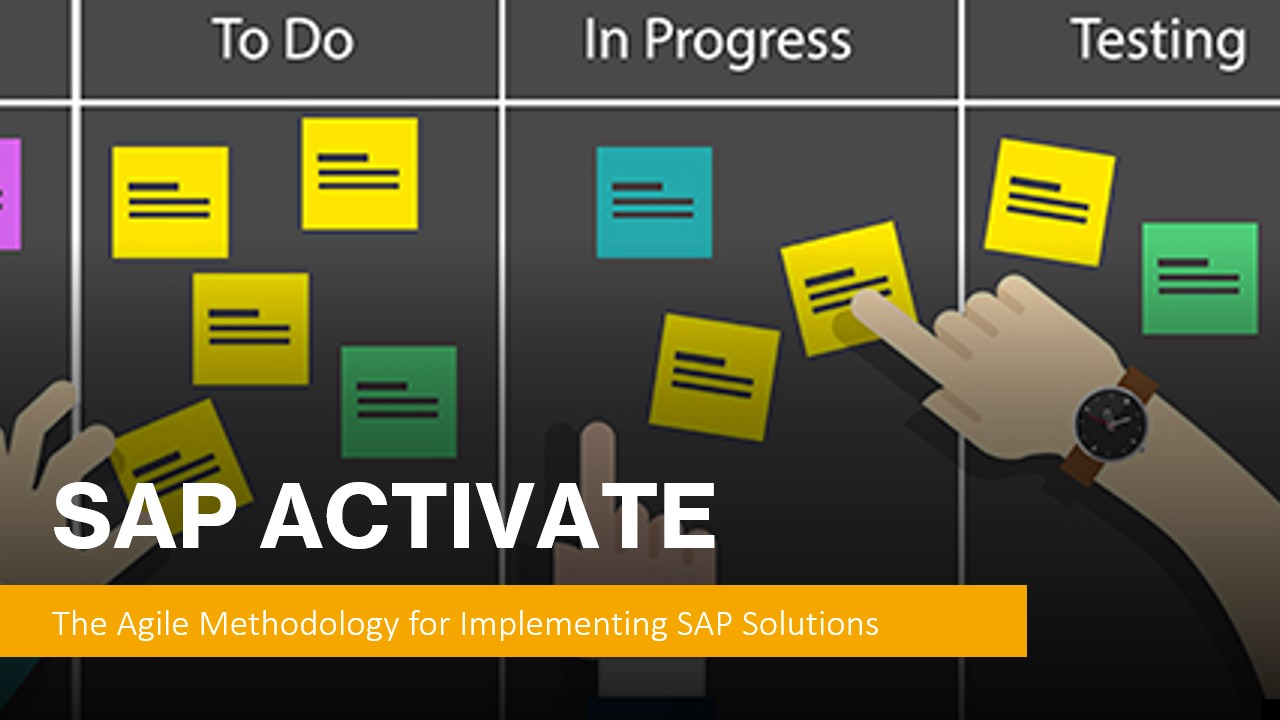SAP ACTIVATE: The Agile Methodology for Implementing SAP Solutions

SAP solutions are widely used by organizations to streamline their business operations, but implementing these solutions can be a complex and time-consuming process. This is where SAP ACTIVATE comes in - a methodology designed to help organizations implement SAP solutions quickly and efficiently.
In this blog post, we will take a closer look at the SAP ACTIVATE methodology and its six phases - Discover, Prepare, Explore, Realize, Deploy, and Run. We will explore the tasks and deliverables involved in each phase and how the methodology can be tailored to meet the specific needs of an organization.
What is SAP ACTIVATE?
SAP ACTIVATE is a methodology for implementing SAP solutions, such as SAP S/4HANA, SAP Hybris, SAP Ariba, and more. It is a combination of best practices, guided configuration, and accelerators that help organizations to implement SAP solutions quickly and efficiently.
The SAP ACTIVATE methodology is based on the Agile methodology and is divided into six phases: Discover, Prepare, Explore, Realize, Deploy, and Run. Each phase has its own set of tasks and deliverables, and the methodology is designed to be flexible so that organizations can tailor it to their specific needs.
Let’s take a closer look at each phase of the SAP ACTIVATE methodology.

-
Discover: The initial phase where organizations identify the business problem and assess the feasibility of implementing an SAP solution. This phase helps organizations to determine if the SAP solution is a good fit for their business and if it can help achieve their objectives.
-
Prepare Phase: This is the first phase of the methodology and involves setting up the project team, defining the scope of the project, and creating a project plan. During this phase, the project team will also identify the business requirements and constraints, as well as the technical landscape.
-
Explore Phase: In this phase, the project team will conduct a detailed analysis of the business requirements and create a detailed solution design. This phase also includes the creation of a prototype and the identification of any risks or issues that need to be addressed.
-
Realize Phase: This is the phase where the solution is built and tested. The project team will configure the solution, develop any customizations, and conduct various tests to ensure that the solution is functioning as intended.
-
Deploy Phase: In this phase, the solution is deployed to the production environment. The project team will conduct end-user training, data migration, and system integration testing to ensure a smooth transition to the new solution.
-
Run Phase: This phase involves the ongoing support and maintenance of the solution. The project team will monitor the solution and address any issues that arise. This phase also includes the creation of documentation and training materials to ensure that users are properly trained and equipped to use the solution.
Task and deliverables of each phase

-
Discover Phase:
Tasks:
- Define the business problem and identify the objectives of implementing an SAP solution.
- Conduct a feasibility study to determine if the SAP solution is a good fit for the organization.
- Identify the key stakeholders and establish a project team.
- Create a high-level project plan and estimate the project cost.
- Document the outcomes of the discovery phase in a Business Case document.
Deliverables:
- Business Case document that includes the feasibility study, project objectives, and high-level project plan.
-
Prepare Phase:
Tasks:
- Define the project scope and objectives.
- Establish the project governance structure, including the project team and roles and responsibilities.
- Create a detailed project plan that includes timelines, milestones, and budgets.
- Identify project risks and create a risk management plan.
- Define the communication and change management plan.
- Develop a project charter document.
Deliverables:
- Project charter document that includes the project scope, objectives, governance structure, and risk management plan.
-
Explore Phase:
Tasks:
- Identify the business processes that will be supported by the SAP solution.
- Conduct workshops with stakeholders to gather business requirements.
- Define the business requirements and create a Business Blueprint document.
- Conduct a Fit-Gap analysis to identify any gaps between the business requirements and the SAP solution.
- Develop a Functional Specification document.
Deliverables:
- Business Blueprint document that includes the business requirements and a description of how they will be met by the SAP solution.
- Functional Specification document that details the system design and functionality.
-
Realize Phase:
Tasks:
- Configure the SAP solution to meet the business requirements.
- Develop any customizations to the SAP solution.
- Conduct unit and integration testing.
- Develop a Master Data Governance plan.
- Develop a training plan and provide end-user training.
- Develop a data migration plan and migrate data to the SAP solution.
Deliverables:
- Configured SAP solution that meets the business requirements.
- Master Data Governance plan.
- Training materials and documentation.
- Data migration plan and migrated data.
-
Deploy Phase:
Tasks:
- Conduct system integration testing.
- Develop a cutover plan to move the SAP solution into the production environment.
- Conduct end-user acceptance testing.
- Develop a system operations guide.
- Conduct end-user training.
- Move the SAP solution into the production environment.
Deliverables:
- Cutover plan.
- System operations guide.
- End-user training materials and documentation.
- Deployed SAP solution in the production environment.
-
Run Phase:
Tasks:
- Monitor the SAP solution and ensure that it meets the business requirements.
- Manage support requests and incidents.
- Perform regular system maintenance.
- Plan for system enhancements and upgrades.
Deliverables:
- Incident reports.
- System maintenance plan.
- System enhancements and upgrades plan.
Thus, SAP ACTIVATE is a methodology that provides a structured approach to implementing SAP solutions. By following the methodology, organizations can reduce the time and cost of implementation while ensuring that the solution meets their business requirements. In today’s fast-paced business environment, organizations need to quickly adapt to changing market conditions and customer demands. SAP solutions are essential tools for achieving this, but implementing them can be a daunting task. SAP ACTIVATE provides a methodology that can help organizations implement SAP solutions quickly and efficiently, while ensuring that the solution meets their business requirements.

